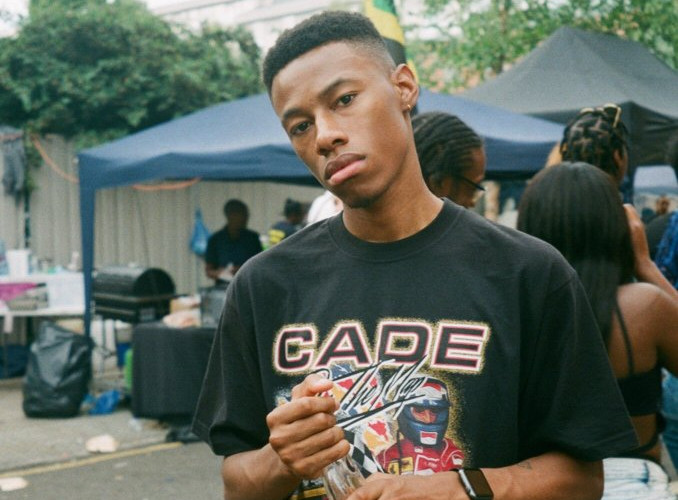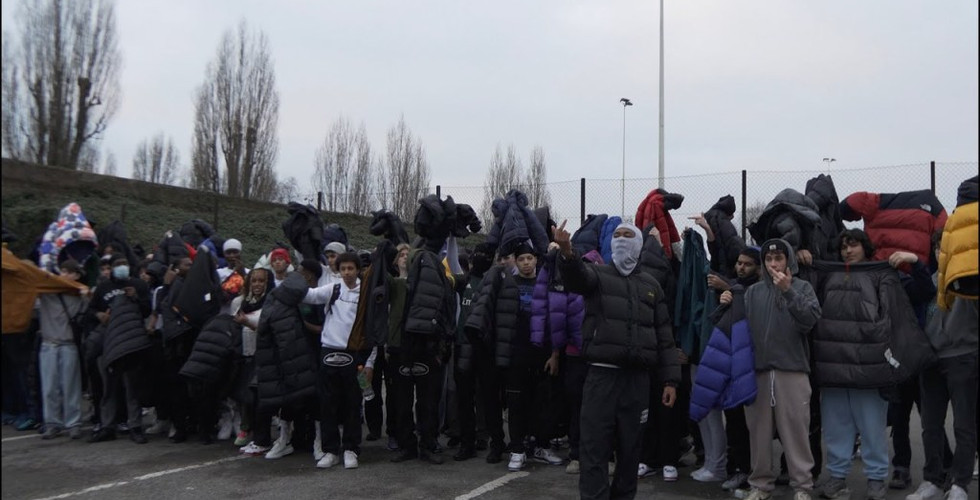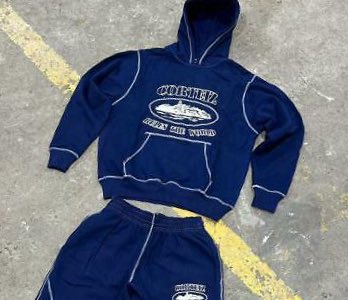HOW CORTEIZ RULES THE WORLD
- mr undiscovered
- Jun 16, 2022
- 9 min read
Updated: Sep 21, 2022
Written by: Charlie Marchment. Directed by: UNDISCOVERED
Da Roots
2015, two London based university students Clint and Ade build a friendship and decide to launch their own clothing brand ‘Cade on the map’ – printing mainly on t shirts the brand gains some traction after its first release in 2016 but is ultimately dissolved by the end of 2017, with the majority of the brands social media and websites deleted or abandoned shortly after.
2017, in the same year , Corteiz {court-eez} was born. But this time Clint went solo from his bedroom, the logo features an image of the Alcatraz Island, which is thought to represent nonconformity.
Corteiz draws heavy inspiration from sports and former sports stars which consists of mostly footballers. He often reshares pictures of these sports stars on his instagram story.
Corteiz has grown to be the hottest streetwear brand in 2022; seen on Virgil Abloh, Dave, Stormzy, Jorja Smith and Central Cee (to name a few). Clint utilised social media and Guerilla marketing – during a pandemic – to grow the brand to where it is now, all before turning 25.
In order to achieve this status, Corteiz had to outrun the competition including major streetwear powerhouses like Supreme, Stussy and Palace – companies with hundreds of employees brushed to the side by one student with a dream.
The Clint Approach
So how exactly did Clint do it?
Corteiz’s appeal is its exclusivity; traditionally exclusivity has been guarded by price, the majority of consumers can’t afford a 3k Louis Vuitton jacket which generates exclusivity for those that can – Corteiz has revolutionised this idea.
In order to buy Corteiz you need to find the password to its website and checkout within minutes of a drop – prices are affordable – the exclusivity is generated through word of mouth and innovative marketing.
It’s not the prices that stop consumers from purchasing, it’s the aspect of not being easily accessible.
If you’re still not sure how this will affect the fashion industry think about it this way – what will consumers demand from brands when price is no longer the issue stopping them from purchasing? The answer, more.
This really is a way for the industry to be pushed to innovate and break down the financial hierarchies that are well established and have long held a majority of what is deemed as desirable.
People don’t want a £300 LV t shirt anymore they want a £30 Corteiz T.

Da CRTZ Effect
Clint’s approach to social media is Corteiz’s secret weapon. His ability to show a youthful and nonchalant personality seems through his social media presence. Their authentic brand voice bridges the gap between them and their customers which creates the loyal, cult type bond.
Corteiz’s official Instagram is kept private – generating a members only, community aspect to the brand. His posts are short and blunt featuring product reveals, drops, passwords, locations and a collection of film inspired photography capturing Clint and co’s movements.
The clothes don’t look like they’re being modelled – they’re being worn. It captures the lifestyle, which relates to only those who know how to wear it.
The community aspect is propelled by Clint’s regular engagement with his audience, often replying to DMs in a nonchalant but funny manner. Their tagline rules the world (RTW) has only strengthened the community and is often said by obviously Clint himself but more so by his audience and customers. Corteiz’s nature of resharing their customers’ clothing partnered with this tagline helps them in return in the sense that part of their marketing is done for them by their audience. This is the power of word of mouth.
Twitter really showcases Clint’s personality, often joking with followers about why the drops are late or what the password is – all helping to generate buzz around the brand, while sharing several memes.
All of this contrasts what we expect to see from brands’ social media. What’s interesting about Corteiz as a streetwear brand is that they actively discourage reselling, Clint posts videos of him cancelling orders that are being resold on Depop to his instagram and recently stated how theres only one place to shop Corteiz – Corteiz doesn’t want consumers to pay more than retail price to be in their community, resale destroys the community aspect as it raises financial barriers to entry; whereas other brands – most notably Nike, do little to nothing about the resale market of their products as it benefits them as a brand to build hype, which in turn ensures each drop sells out (Thus maximising sales for Nike) Nike don’t care because they’re being paid regardless; even if this isolates consumers, they don’t care because at the end of the day resale keeps their brand relevant and profitable.
This community element of Corteiz is reinforced when you look at their work with @Aljab_ on behalf of Fruitful Resource Centre Nairobi. He was able to donate a stationary, educational resources and clothes from Corteiz.
Part of the Caption reads:
‘Unfortunately, despite the all the good Fruitful Rescue Centre has done for the Kibra community. They still find it difficult to gain funds in order to renovate areas of the orphanage that need to be fixed, pay for the school fees and feed all of their children. Their only flow of income is by selling art pieces the children make in the market. I was able to donate pencils, pens, paper, reading books and 60+ T-shirts and tracksuit bottoms all thanks to @crtz.rtw . This wouldn’t have been possible without ALL the mandem at CRTZ so I will always be grateful.’
A small London based upcoming fashion brand is doing more to help those less privileged than million-dollar powerhouses! Not only did this show Corteiz’s effort to give back and help others, especially globally, to fit their mantra ‘rule the world’ but it quite rightfully generated a lot of shares for them and we can only hope that as Corteiz grows, good deeds like this continue to grow with them.
Da Great Bolo Exchange
Elsewhere alongside their social media presence, Corteiz is able to reach customers in the real world – their most recent (and most publicised) in person drop ‘Da Great Bolo Exchange’ propelled the brand into mainstream media.
Corteiz offered consumers the chance to trade puffer jackets from big brands like The North Face and Nike Nocta in return for a Corteiz puffer – establishing themselves as on par with those brands, which sit at the top of streetwear.
My feed blew up with videos of people literally running around London to get to the drop, which Clint revealed the location to on Corteiz’s insta. Hundreds of people turned up to give away their best jackets to potentially receive one of the 50 Corteiz jackets available. Some even played rock paper scissors to decide who won the remaining pieces.
Perhaps the best part of the exchange was what happened after; the traded in jackets worth a combined £16,000 were donated to the homeless, cementing Corteiz as a brand for the people doing what they can to create change.
This donation is what launched Corteiz into mainstream media with fashion powerhouse Vogue beginning to report on the brand alongside Complex, Harpers, Bazaar and Hypebeast. You can also bet that he turned down a bunch of interviews with them too.
Da New Supreme
Not only was this a perfect example of guerrilla marketing but a signal for other brands to appeal to customers in real life – not just online.
Corteiz has consistently managed to physically gather their customers in the streets of London and paris. Having hundreds of young adults chase you around London for a £35 t-shirt purely because of brand image and exclusivity is majorly impressive and echoes the Hypebeast era of the late 2010’s when Supreme was at its prime with queues outside their stores lasting all day.
Credits to @aljab on 3rd Photo
Furthermore when you begin to compare Corteiz and Supreme you can see influences from a lot of Supremes business model; limited capsule collections, dropped on a website at a specific time, for an audience of young adults excited to own something few others manage to obtain. Is Corteiz the new Supreme? Let me know what you think in the comments.
What’s important to remember when comparing Corteiz to other streetwear brands is Corteiz’s independence; Supreme was bought by Vans in 2020 for $2.1 billion whereas Corteiz continues to operate under Clint and his team in London. This means that while Supreme has whole teams with hundreds of thousands of funding behind them Corteiz is making it work with what they have.
This is perhaps what drives Corteiz to be so radical; as a small business competing with big companies they need to do whatever they can to gain foothold in the market, and Corteiz achieves this through their marketing and brand image.
Haters + Fakers
Of course everything is not positive 100% of the time especially with how easy it is to complain publicly nowadays, with Corteiz recently under fire for the quality of their clothes following a collaboration T with Central C (a long time supporter of the brand) Clint’s response was that while Corteiz partnered with Central Cee for the collab design they didn’t have control of the production.
Corteiz have also gotten a lot of hate on their designs saying it’s simple and that anyone can do it.
The thing is, while anyone can do the design:
Not everyone can make a brand.
Not everyone can grow a hot and rising brand solo from their bedroom floor.
Not everyone can have the creativity to market a brand accordingly.
Not everyone can manage shipping and customer service in a small team.
and not everyone can keep it going for 4 years.
Fashion business is more than design and that’s what people forget. It’s easy to judge when you’re on the outside looking in but the day that Clint decides to do an interview (hopefully with us 😉 ) you’ll hear the trials and tribulations of what it took.
These two aspects combined have left some people doubting Corteiz’ longevity. I’ve come across countless comments saying the brand will die out soon or that it’s already dying.
What do you think? Are you counting out Corteiz? Do you think new designs and better quality will have to come forth for them to survive? Let us know below.
However theres definitely two people who don’t think Corteiz is dying, and thats whoever is behind ‘Lazar’ and the creative team at Boohooman.
‘Lazar’ deemed the ‘wish version of Corteiz’ by their own instagram comments is exactly that, a cheap copy. Imitating everything from the logo to the poses in Corteiz’ photos, Lazar does little to establish themselves as their own brand.
Although more recently people are starting to think that Clint is in on the joke, the owners have yet to show their faces or actually sell a product (There’s no photos/Videos/Tiktoks of anyone owning a piece of Lazar outside of their own instagram)
BoohooMans replication of Corteizs contrast stitch tracksuit – which sold out in seconds on Corteiz’s drop. Something that embodies the saying ‘disappointed but not surprised’, Boohoo has a longstanding reputation of knocking off smaller businesses and it only makes sense that they too would have noticed Corteiz’s hype recently and decided to try cash in on it themselves.
‘Try’ is imperative here as once the knockoff was noticed on Boohoomans website the memes began rolling in – I saw Tiktoks, Ig posts and Tweets clowning Boohoo, with Clint himself berating the brand on Twitter. Clint also went on to drop ‘i <3 boohoes’ t shirts in what can only be described as a power move that was simultaneously hilarious and clever – the tees gained him a lot of respect which likely increased orders, allowing Clint to capitalise off someone capitalising off him.
With all this in consideration what can we learn?
Community Sells. Consumers want to feel included, they want to feel like they’re a part of whatever their buying – you can build this through private pages and passworded websites as they create an ‘if you know you know’ mentality that makes consumers feel special when they successfully snag a piece they’ve been wanting, as they know other people outside of the community has no idea how to get their hands on it.
Do Something Different. Switch up your marketing! More and more brands are deviating from traditional advertising to Guerilla tactics – this is across the whole industry; Balenciaga recently covered a store in bright pink fur to celebrate a new launch while Coach did a pop up pillowy structure to relate to their popular pillow tabby bag. Corteiz did the bolo exchange. Do something out of the ordinary, something cool, something different. Look at your designs, your product’s purpose, your audience and find something you can utilise and build on that isn’t just an instagram post or a lookbook.
Support those around You, Value Loyalty, and Know your Worth. Don’t rely on influencers to make your brand – Corteiz doesn’t do paid partnerships, and Clint recently posted how he turns down sending clothes out to ‘influencers’ for free. Focus on the team around you and the community that has been with you from the start – these are the people who ensure your success.
Conclusion
What we can expect to see from Corteiz moving forward? I’m expecting major plans to utilise this and its vibes, I’m sure they’ll be out in the streets again. But who knows their next move.
Expansion into womenswear, a race across the beach to trade nike shorts for Corteiz? A waterfight across London? I wouldn’t be surprised if they collaborated with a drinks company on a summer drink.
What do you think is next? Let us know below.





































































